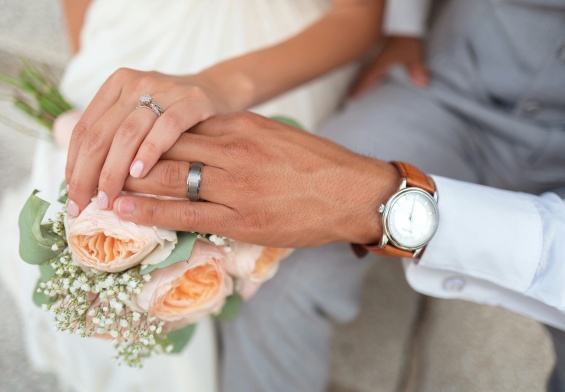Today’s marriages look very different from only a few generations ago. Traditional gender roles are melting away, making relationships more fluid and dynamic. Husbands aren’t only breadwinners anymore, and wives aren’t just homemakers anymore. This shift impacts the personal dynamics of relationships and the legal considerations in family law cases. If you’re navigating marriage, divorce, or custody disputes, a Monmouth County family law attorney can help you understand how these changing roles might apply to your case.
Understanding Marital Roles
Traditional Marital Roles
Marriages in the past had a clear division of labor. Men worked outside the home to provide for the family. Meanwhile, women maintained the household and cared for the children. It was like a theater play: both parties had a role they couldn’t step outside of.
Legal systems mirrored this structure. Courts often presumed men were the primary earners and held them responsible for alimony. Custody arrangements usually favored mothers, assuming they were more nurturing. These assumptions came from the societal expectations of the time. A legal framework that reinforced gendered roles came out of these expectations, even when they no longer applied.
Evolving Gender Dynamics in New Jersey
The Feminist Movement and Legal Reform
The 20th century brought a societal shift, powered by the feminist movement. Women’s suffrage, reproductive rights, equal access to education, and workplace protections all helped break barriers and expand women’s roles beyond the home. These changes took time and effort, and people needed to adjust.
Studies show these reforms disrupted long-standing norms and forced courts to reevaluate gender-based assumptions. A spouse could no longer rely on tradition alone to justify alimony or custody claims. The legal world had to evolve—fast.
Why This Matters Legally
Courts in New Jersey, including those in Monmouth County, now apply gender-neutral standards in divorce and custody. But understanding how past norms shaped present expectations can be crucial in cases where roles were still unevenly divided.
How Changing Family Structures Impact Legal Proceedings
The Rise of Dual-Earner Households
Today, it’s common for both spouses to work outside the home. According to a 2016 study, women made up 47% of the workforce, and almost 70% of mothers held jobs. Financial independence has become a key part of modern relationships.
Still, there’s a catch: even in households where both partners work, women often end up with most of the domestic duties. It’s like clocking out at one job and clocking right back in at home. Let’s say both spouses work 9-to-5, but only one is doing the dishes, helping with homework, and managing doctor appointments. That’s not fair, and resentment can quickly build.
Division of Labor at Home
The term “second shift” refers to the unpaid labor many women perform at home after a full day of paid work. A common dynamic? The husband “helps” with a chore, expecting his wife to oversee, coordinate, and execute almost everything else. The mental load of doing these things is rarely acknowledged.
This unspoken imbalance doesn’t always show up on paper, but it shows up in arguments, burnout, and sometimes divorce filings. It also affects marital satisfaction, particularly when one partner feels unsupported despite contributing equally—or more—to the relationship.
Why This Matters Legally
During divorce proceedings, these hidden contributions can impact alimony, equitable distribution, and even custody decisions. A Monmouth County family law attorney can help present the full picture. They’ll go beyond income statements and into the unpaid labor that kept the household running.
What Americans Think Today
According to a 2024 Pew Research survey, 57% of Americans say evolving gender roles have helped families live more comfortably. 47% believe these shifts make marriages more successful. Yet, almost half still feel that society doesn’t accept men who take “feminine” roles—like being a stay-at-home dad or managing the household.
Perceptions vary based on political views, education, and upbringing. Imagine someone raised by a stay-at-home mother. They might feel conflicted about an equal division of domestic responsibilities in their own marriage. These beliefs often seep into arguments and decision-making—both at home and in the courtroom.
Who Initiates Divorce?
Here’s a striking statistic: women start about 69% of divorce proceedings in heterosexual marriages. In non-marital relationships, breakups are much more balanced. Why the difference?
Research suggests that women in marriages often bear the brunt of unmet emotional and practical expectations. When a woman earns money, manages the home, and still feels unsupported, dissatisfaction grows. Over time, that frustration can lead to divorce—especially when parenting responsibilities are not equally shared or appreciated.
Why This Matters Legally
Judges don’t just look at financial numbers—they assess the full story. If one partner handled the children’s daily needs, managed the household, and sacrificed career goals to support the other’s ambitions, that context matters in legal arguments for spousal support or equitable asset division.
Legal Implications in Monmouth County
New Jersey law treats spouses equally in theory, but in practice, the nuances of each marriage matter. For instance, a spouse who put their career on hold to support the family may seek alimony or compensation through equitable distribution. Courts also weigh parenting responsibilities carefully when determining custody.
Imagine a Monmouth County couple: the husband traveled extensively for work, while the wife stayed home, raised two children, and gave up her own career aspirations. A Monmouth County family law attorney can help ensure her contributions are recognized—not just her lack of income.
Likewise, a stay-at-home dad who sacrificed his career should be fairly represented. Today’s family law reflects these modern dynamics, but presenting them clearly is essential.
Dealing With Modern Gender Roles in Marriage
While gender roles in marriage have evolved, many imbalances still exist. Hidden dynamics exist in domestic labor and emotional responsibility. Real consequences during a divorce or custody dispute can arise from these issues.
If you’re dealing with these issues, work with a knowledgeable Monmouth County family law attorney. Understanding how societal shifts affect your legal rights is the first step toward reaching a fair resolution. Because marriage may have changed—but fairness should never go out of style.
Resources:
Hawke, Lucy A. (2007) “Gender Roles within American Marriage: Are They Really Changing?,” ESSAI: Vol. 5, Article 23.
Available at: https://dc.cod.edu/essai/vol5/iss1/23
Carreiro, J. (2021). Gender Role Beliefs, Household Chores, and Modern Marriages. https://aura.antioch.edu/etds/707
https://www.pewresearch.org/social-trends/2024/10/17/views-of-the-impact-of-changing-gender-roles/
https://www.asanet.org/women-more-likely-men-initiate-divorces-not-non-marital-breakups/




